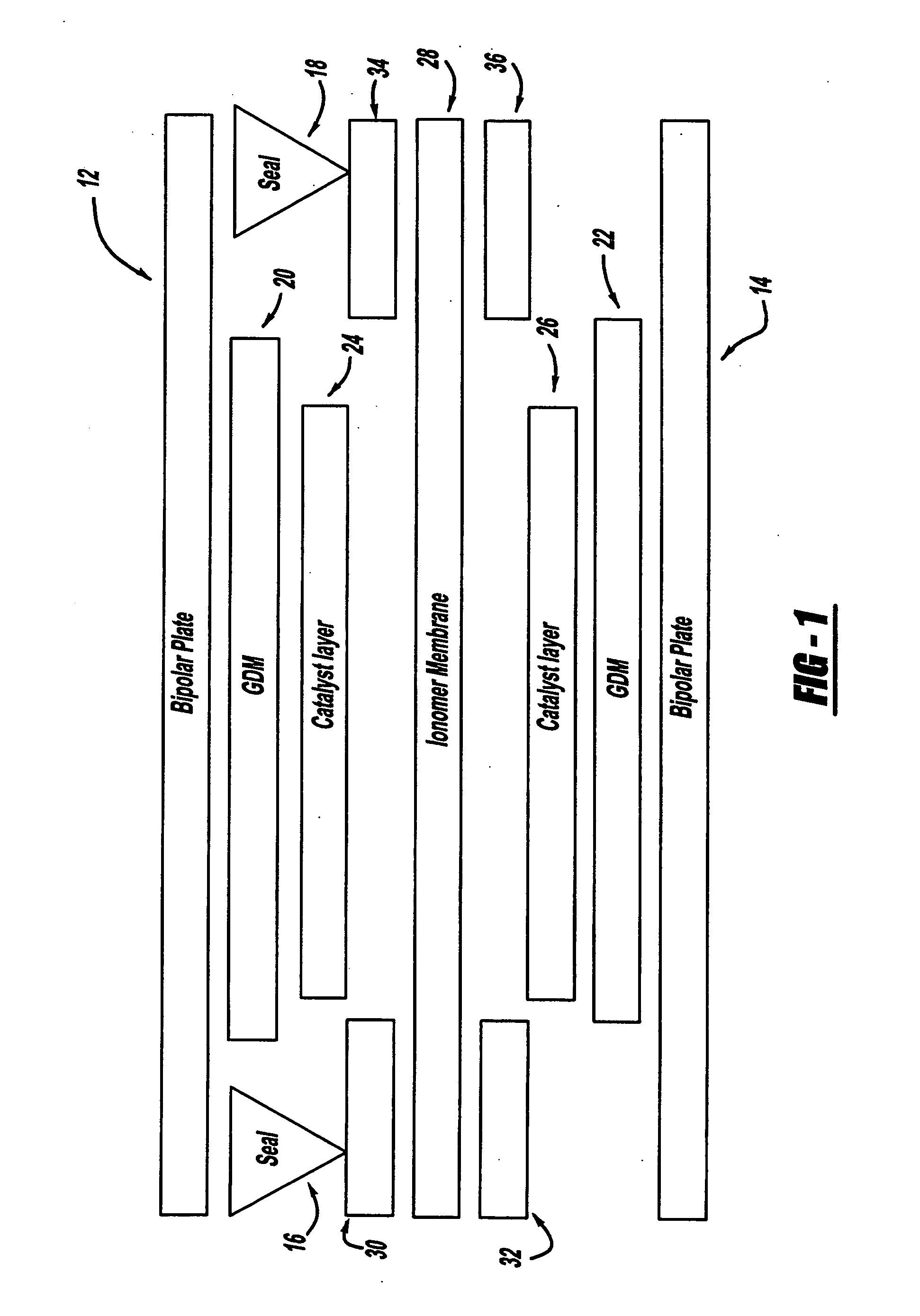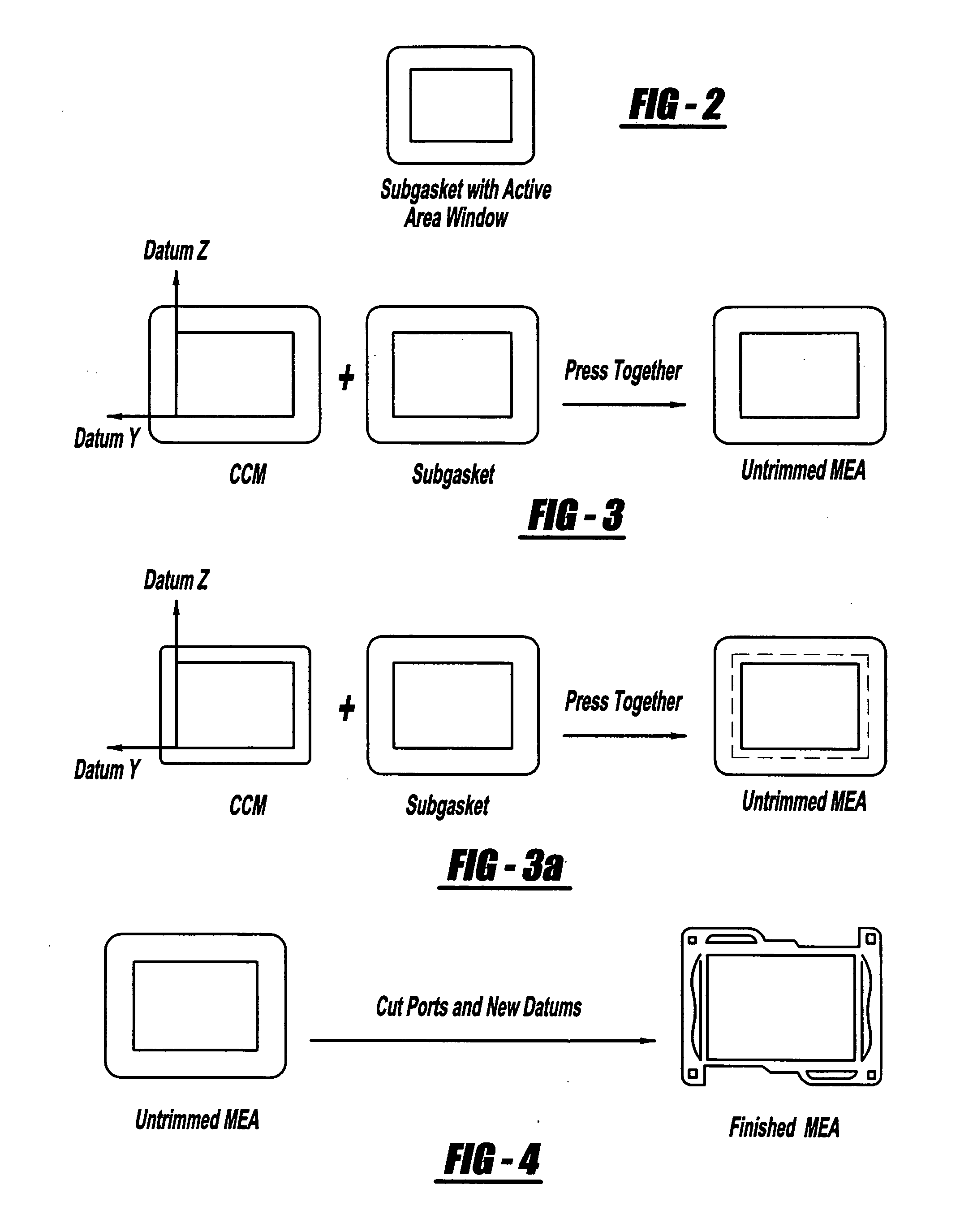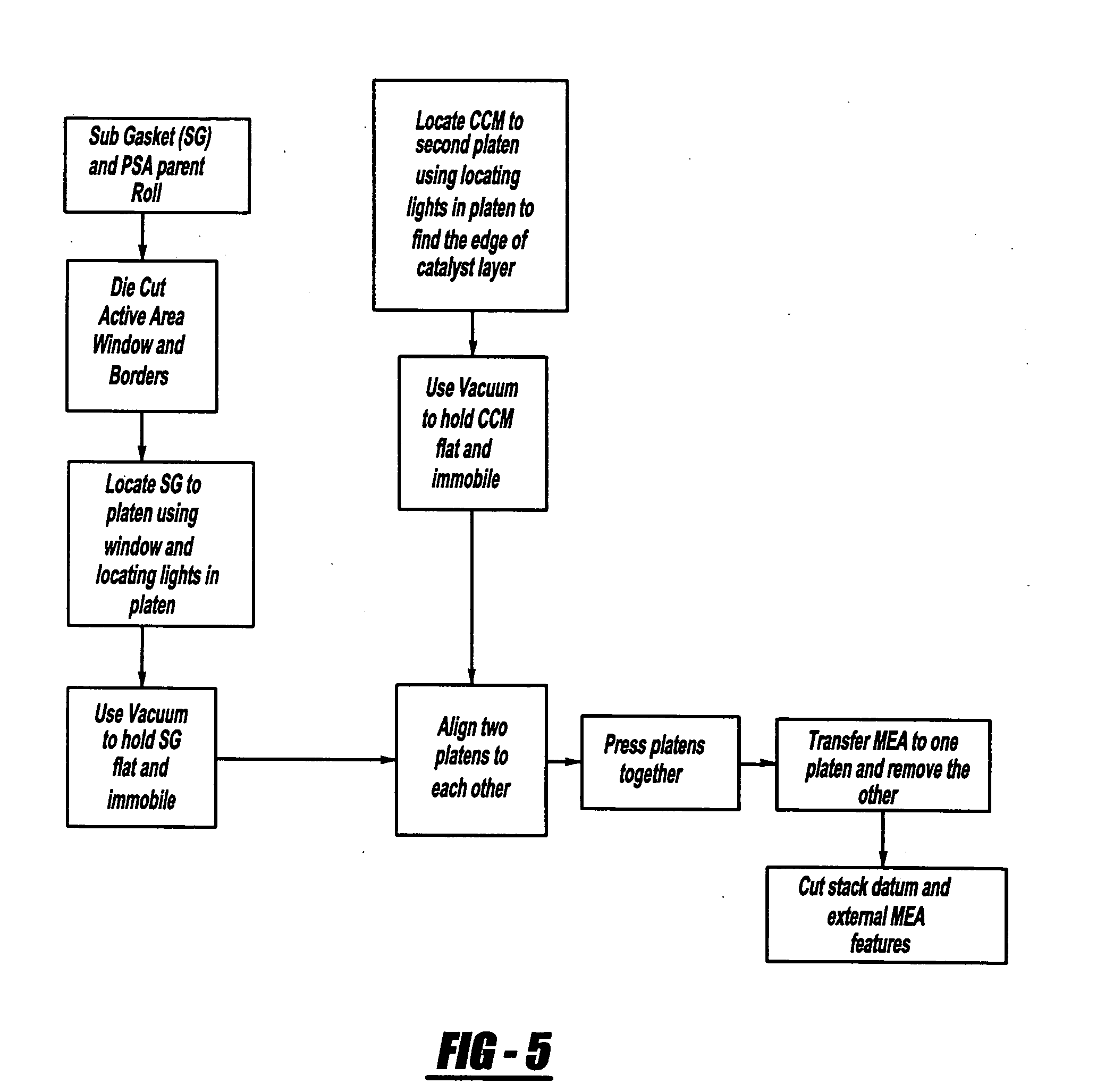Manufacture or membrane electrode assembly with edge protection for PEM fuel cells
a technology of pem fuel cells and membrane electrodes, which is applied in the field of fuel cells, can solve the problems of insufficiently satisfying conventional methods of attaching the subgasket to the ionomer membrane, precious metal particles, and high cost of catalysts
- Summary
- Abstract
- Description
- Claims
- Application Information
AI Technical Summary
Benefits of technology
Problems solved by technology
Method used
Image
Examples
Embodiment Construction
[0019]The following description of the preferred embodiment(s) is merely exemplary in nature and is in no way intended to limit the invention, its application, or uses.
[0020]A typical PEM fuel cell 10, e.g., as shown in FIG. 1, is composed of a pair of spaced and opposed bipolar plates, 12, 14, respectively, a pair of spaced and opposed seals, 16, 18, respectively, two spaced and opposed gas diffusion medium layers 20, 22, respectively, two spaced and opposed catalyst layers, 24, 26, respectively, an ionomer membrane 28, and optionally, some type of subgasket material 30, 32, 34, 36, respectively. As noted, the subgasket is optional and can appear on one or both sides of the ionomer membrane 28. The location of the subgasket relative to the ionomer membrane 28 edges and the catalyst layers 24, 26, respectively, edges is also variable depending on the function of the subgaskets.
[0021]The present invention primarily relates to methods for attaching a subgasket to an ionomer membrane. ...
PUM
| Property | Measurement | Unit |
|---|---|---|
| area | aaaaa | aaaaa |
| pressure sensitive | aaaaa | aaaaa |
| vacuum force | aaaaa | aaaaa |
Abstract
Description
Claims
Application Information
 Login to View More
Login to View More - R&D
- Intellectual Property
- Life Sciences
- Materials
- Tech Scout
- Unparalleled Data Quality
- Higher Quality Content
- 60% Fewer Hallucinations
Browse by: Latest US Patents, China's latest patents, Technical Efficacy Thesaurus, Application Domain, Technology Topic, Popular Technical Reports.
© 2025 PatSnap. All rights reserved.Legal|Privacy policy|Modern Slavery Act Transparency Statement|Sitemap|About US| Contact US: help@patsnap.com



